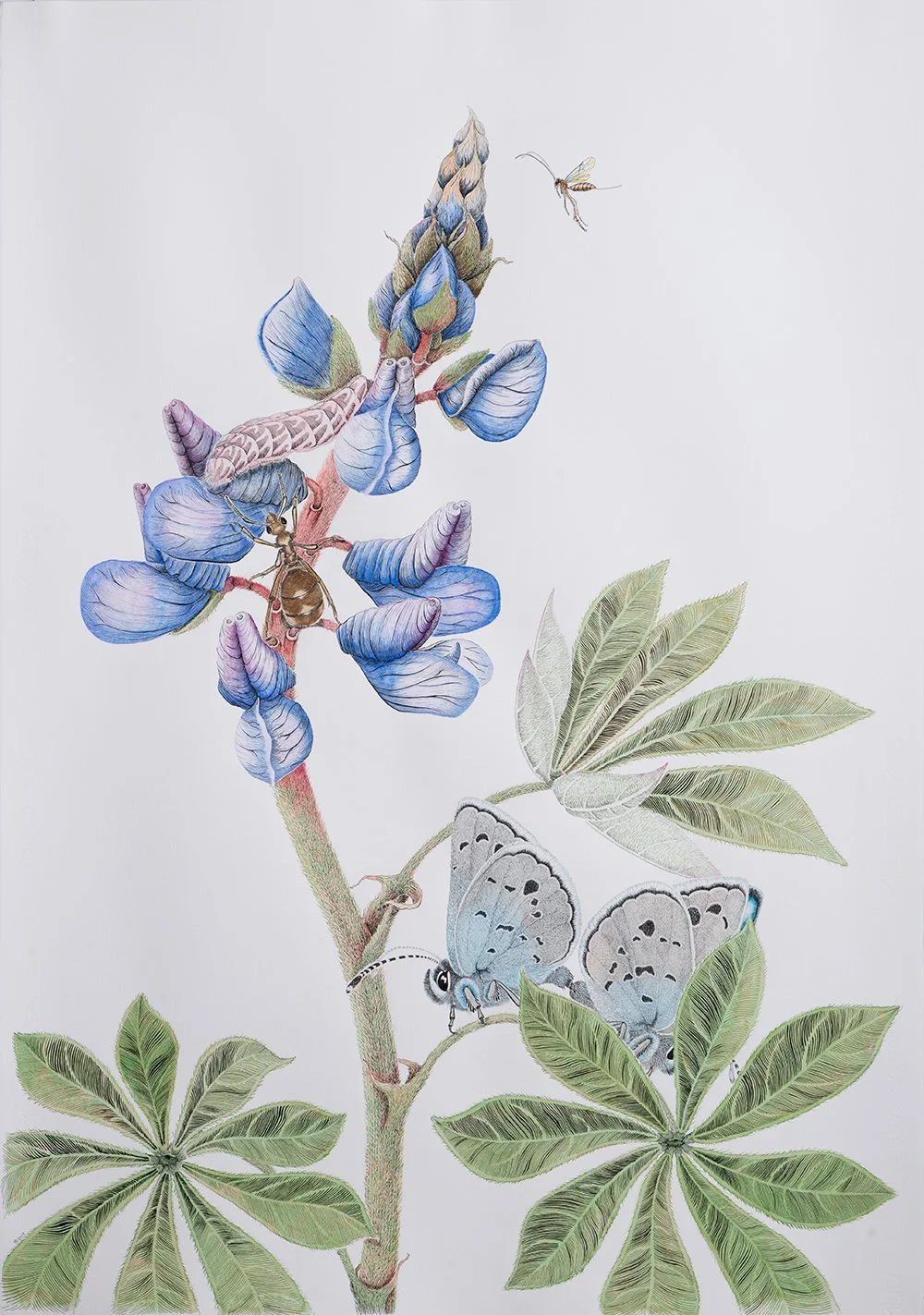Lupinus glaucopsyche, 2015
Myrmecophily translates loosely as “ant-love” and describes the occurrence of evolved interspecies associations between ants and a variety of other organisms including plants and other insects.
Species of Fabaceae, like Arctic lupine (Lupinus arcticus), are often associated with nitrogen-fixing bacteria. This association leads Arctic lupine to metabolise more nitrogen and produce secondary metabolites as a by-product.
Lycaenid butterflies like Blue azures (Glaucopsyche lygdamus) are attracted by the secondary metabolites and lay their eggs on the plant, but are more likely to do this if particular ants are present.
The reason for this is complex, but infinitely fascinating:
Lycaenid caterpillars have co-evolved with ants and have a developed a special structure (called a tentacular organ) towards the rear of their body.
In the southern Yukon, a blackish and shy species of ant, called Formica podzolica, is found in the boreal coniferous forest and often lives close to Lycaenid caterpillars. When the ant drums on the caterpillar’s tentacular organ, a nitrogen-rich nectar is secreted that is highly prized by the ants.
At some point in the evolution of this association, it became more lucrative for the ant to protect the caterpillar than eat it, and the pheromones between the two began to reinforce this. Today, the relationship is so strong that many ant species will actively defend the caterpillars from predators and parasites like the Braconid wasp (pictured here).
As a result, Blue azure caterpillars tended by these ants are four to twelve times more likely to survive to pupation. This survival rate has led to the evolution of the behaviour of adult butterflies, which seek out plants with Formica podzolica before laying their eggs.

